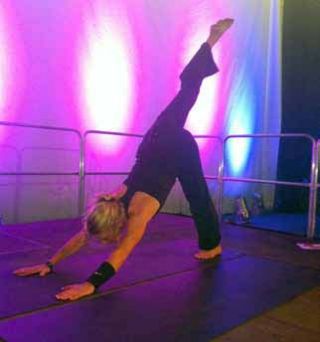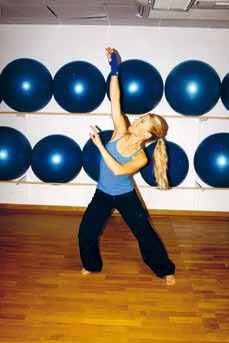Health
Teens and Psychosomatic Illness
Dance May Be an Effective Therapy for Adolescent Girls with Health Complaints
Posted December 11, 2012

As most parents and teachers of teens can attest, psychological health problems are prevalent—and perhaps on the rise—among adolescents. The first sign of stress-related problems, depression, or other psychological issues may come in the form of psychosomatic complaints ranging from headaches to “cramps” to a general and persistent lethargy.
Given what we know about the positive effect of regular physical activity on mental health, as well as the proven ability of exercise to reduce stress and increase a sense of self-control, it is perhaps not surprising that researchers in Sweden now report that a dance intervention program improved self-assessments of stress and psychosomatic symptoms among school-age girls. The study was published online last month in the Archives of Pediatrics and Adolescent Medicine.
Ann Duberg of the Centre for Health Care Sciences, Örebro County Council and Örebro University, Sweden, and her team conducted a randomized controlled intervention trial with a two-year follow-up. The researchers recruited 158 adolescent girls with psychosomatic problems and/or recurrent experiences of stress. The girls, ages 13 to 18 years, had identifiable “internalizing problems,” which were evidenced by repeat visits to the school nurse for psychosomatic symptoms, such as pain in the head, stomach, neck, back, or shoulder; or for persistent feelings of tiredness, worry, or poor spirits.

The subjects were randomly assigned to either a dance intervention group or a control group. The dance group met twice a week for 75 minutes over a period of 8 months. The focus of the program was on the joy of movement and not on performance. The theme varied from African dance, show jazz, and hip-hop to contemporary dance. Body awareness and relaxation were always part of the class. Compliance with the intervention was 70 percent, and 86 percent of the girls attended the study follow up. Ninety-one percent of them rated the dance intervention as a positive experience.
Data collection took the form of a self-rated health questionnaire. Say the researchers: “The question ‘In general would you say your health is… 1. Very bad, 2. Bad, 3. Neither good or bad, 4. Good, 5. Very good. ’ is regarded as simple, direct, and is assessing unknown perceptions and values related to respondents’ health status in a unique manner.”
Those girls who participated in the dance program showed a significant improvement in self-rated health compared to the control group. “This suggests,” Duberg says, “that a dance intervention can be suitable for adolescent girls with psychosomatic and stress symptoms.” Four months after the intervention ended, the improvement remained.
Duberg hypothesizes that the dance group experienced an increase in energy and self-esteem. “According to these results, despite problems such as stress and psychosomatic symptoms (and other potential challenges in being an adolescent girl), dance can result in high adherence and a positive experience for the participants, which might contribute to sustained new healthy habits.”
For more information:
Anna Duberg, RPT; Lars Hagberg, PhD; Helena Sunvisson, PhD; Margareta Möller, PhD. Influencing Self-rated Health among Adolescent Girls with Dance Intervention: A Randomized Controlled Trial. Arch Pediatr Adolesc Med. 2012;():1-5.


